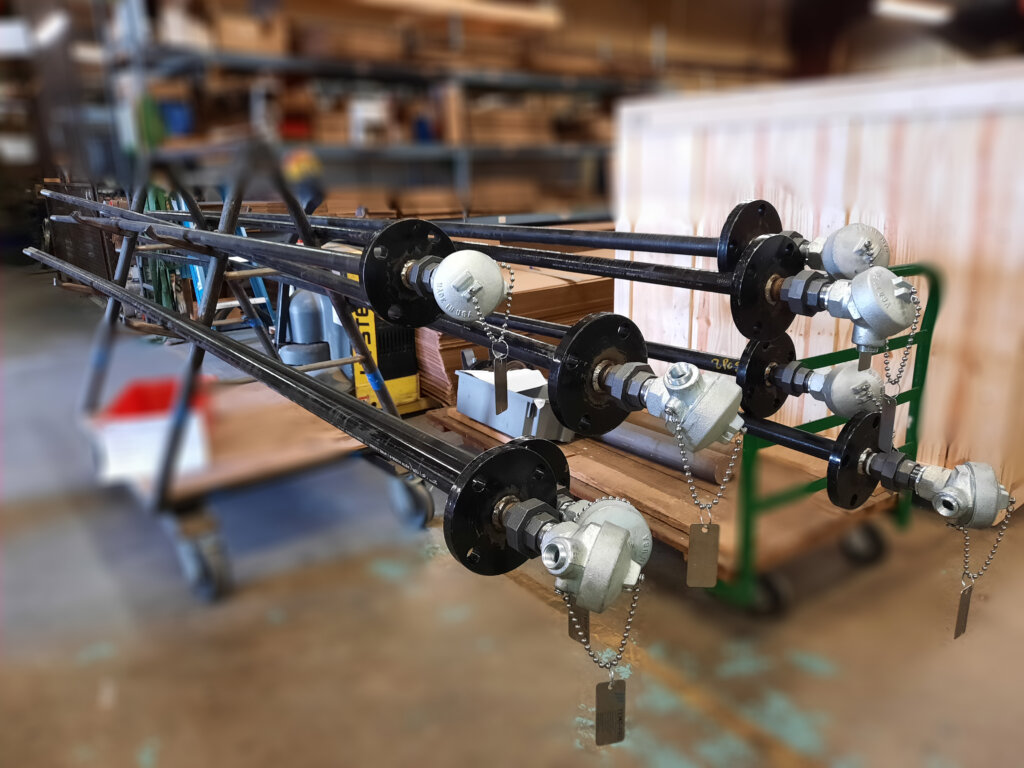Before now, fossil fuels have dominated as the renewable power and energy resource for most countries, with several accompanying implications on health and the climate globally. However, renewable energy sources are the new shift that has emerged to make our lives and world better by making our power sources pollution-free and environment-friendly.
In the U.S. alone, the use of renewable energy has increased by about 50% in the last decade. Examples of this alternative energy include hydropower, geothermal energy, solar and wind power, tidal power and energy from biomass combustion.
To keep renewable energy operations at maximum efficiency, engineers must closely monitor and control a variety of parameters, including temperature. This is why temperature sensors form an essential part of the regulatory system that makes up the power plant.
What are Temperature Sensors?
Temperature sensors are devices used to read temperature changes via changes in electric signals. They are employed in a variety of fields and applications to measure the temperature of solids, liquids and gasses. Temperature detectors, as a part of the regulation system, ensure optimal utilization of alternative energy and reliable values for quality regulation. There are different types of temperature sensors based on their connection. These include:
Thermocouples
Thermocouples are among the most common temperature sensors used in power generation due to their sensitivity, accuracy and wide temperature range. They consist of two dissimilar metal wires (e.g., copper and constantan), which are electrically bonded at two points called junctions.
The two different metal wires form a thermoelectric, which provides a potential difference corresponding to the temperature difference between them. Like most sensors, they are often fitted in a stainless-steel casing, and they measure a wide temperature range (-200 to 1750°C).
 Waste-to-energy remains a strong contributor within the diverse number of renewable energy sources currently in use and is an example of an application for Thermocouples. The chemical and thermal processes involved in waste-to-energy generation generate heat and pressure that must be measured accurately and precisely, allowing a renewable energy power plant to maintain a safe and effective operation. Temp-Pro’s knowledge of the high-temperature environments in which waste-to-energy operates is one way we can assist your company in creating the specific solution needed for high performance and output.
Waste-to-energy remains a strong contributor within the diverse number of renewable energy sources currently in use and is an example of an application for Thermocouples. The chemical and thermal processes involved in waste-to-energy generation generate heat and pressure that must be measured accurately and precisely, allowing a renewable energy power plant to maintain a safe and effective operation. Temp-Pro’s knowledge of the high-temperature environments in which waste-to-energy operates is one way we can assist your company in creating the specific solution needed for high performance and output.
Thermistors
In thermistors or thermal resistors, the temperature reading is not dependent on the potential difference but on the resistance. They consist of a polymer or ceramic (e.g., oxides of manganese/cobalt) coated in a glass surface. Thermistors have a nonlinear temperature relationship, so they require linearization to accurately interpret the data in the power system.
Most thermistors are negative temperature coefficient (NTC) thermistors in which a temperature rise occurs only when the resistance reduces. However, thermistors are still widely used in the renewable temperature industry for their temperature range (-90 to 130°C) and accuracy, especially in detecting small changes in temperature, repeatability and short response time.
Resistance Temperature Detectors (RTDs)
RTDs are temperature sensors that measure temperature changes by direct proportional changes in electrical resistance. Typically built from platinum, though devices made from nickel or copper are not uncommon, RTDs can take various shapes, such as wire wounds or thin film.
Platinum RTDs (PRTDs) are the most accurate temperature sensors, offering stable readings and repeatable responses which can be applied over a wide temperature range (-200 to 600 °C).
 Oil and metal temperatures of the bearings in turbines, generators, and other systems – to identify the hot spots and overheating that can lead to increased wear and tear. RTDs are ideal for measuring temperature in bearings and bushings, oil and water tanks, air tanks, and heat exchangers. RTD sensors can be mounted into a thermowell, or directly into the process with a spring-loaded compression fitting for easy installation and replacement.
Oil and metal temperatures of the bearings in turbines, generators, and other systems – to identify the hot spots and overheating that can lead to increased wear and tear. RTDs are ideal for measuring temperature in bearings and bushings, oil and water tanks, air tanks, and heat exchangers. RTD sensors can be mounted into a thermowell, or directly into the process with a spring-loaded compression fitting for easy installation and replacement.
Custom-made temperature sensors can be manufactured to guarantee operation at low temperatures with increased resistance to vibrations.
Whether you have existing or aging equipment that needs to be maintained to extend its operation lifetime or a new renewable energy facility which requires temperature measurement devices across all systems, we are ready to support you with both existing and custom-made temperature measurement devices.
How the Renewable Energy Industry Benefits from Temperature Sensors
The following are areas where temperature sensors find valuable applications in the renewable energy industry:
- Temperature sensors installed on a solar energy collector and in an accumulation tank are useful in solar plants.
- They are an important component in controlling the temperature of water or liquid in accumulation tanks.
- RTDs are often found in wind turbines, solar panels and other power generation equipment, where they monitor heat levels.
- They detect oil and metal temperatures of the bearings in turbines, generators and other systems to prevent damage.
Takeaways
- The future of renewable energy is to keep our environment safe and to maintain a sustainable source of energy.
- A temperature sensor is an essential component required for the proper functioning of the renewable energy industry.
- Temp-Pro is the leading company in producing and installing RTDs, thermometers, thermowells, thermocouples and other related temperature-sensing devices to meet the needs of renewable energy firms.
Trust Temp-Pro for all Your Temperature Sensors Needs
Temp-Pro is a leading manufacturer and supplier of temperature sensors that includes hydropower for industrial applications. For over fifty years, Temp-Pro has rendered unparalleled services and has become the go-to solution for many companies, including Fortune 500 organizations.
At Temp-Pro, we employ our expertise to provide quality and personalized solutions for your needs. We are committed to delivering cost-effective temperature sensors and related services. To make a request or ask a question, please contact us at 1-855-657-7706 or request a quote here.




